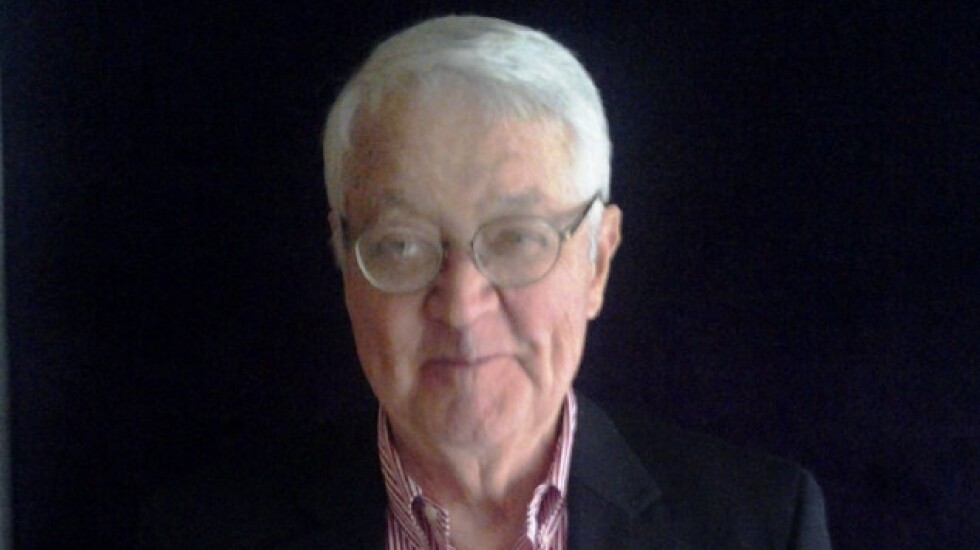
The overnight shift in newsrooms is usually quiet. Until it isn’t.
In 1962, John Hogan, a recent college graduate, was alone in the WGN newsroom on a midnight to 8 a.m. shift when he found himself on the telephone with a stream of worried callers.
They weren’t phoning about a shooting or a fire — subjects familiar to any rookie Chicago newsman.
The callers suffered from heightened anxiety due to the Cuban missile crisis and feared World War III was about to break out.
“People were seeking the voice of authority and hearing the words of a 21-year-old,” Mr. Hogan recalled to his wife, Judy E. Brady.
The incident provided Mr. Hogan with a humbling and long-lasting insight into the public perception of the media.
After several years of preparing radio and television newscasts at WGN, Mr. Hogan was elevated to the position of television news reporter. His voice was also regularly broadcast over the station’s radio airwaves.
Mr. Hogan died Dec. 10 from complications following heart surgery. He was 82.
Mr. Hogan’s assignments at WGN included everything from covering Santa’s visits to local schools to the corruption trial of former Illinois Gov. Otto Kerner, the trial of mass murderer Richard Speck, the 1968 Democratic National Convention, the McCormick Place fire of 1967 and airline crashes at O’Hare and Midway airports. He was the first reporter on the scene when Mayor Richard J. Daley died at his doctor’s office in 1976, his wife said.
“He was a consummate street reporter,” said Bob Manewith, former news director at WGN-TV. “He had great presence in handling a story, in knowing what the story was, what he had to do, who he had to talk to.”
Mr. Hogan also served for a time as environmental editor and reported on topics like smog and pollutants in the Chicago River and Lake Michigan.
As a moonlighting gig, he periodically was the Blackhawks’ public address announcer. He gained particular satisfaction from announcing Bobby Hull’s 500th career goal.
Over the course of his career, Mr. Hogan interviewed a number of prominent figures, including Dwight Eisenhower, Richard Nixon, Robert Kennedy, Jimmy Carter and Martin Luther King Jr.
He was at the news conference the Beatles held in Chicago in 1966 at the Astor Tower Hotel to apologize for John Lennon’s comment in which he proclaimed the band was more popular than Jesus. Hogan departed the press conference with Paul McCartney’s drinking glass, said his wife, who wishes she knew where the keepsake was.
Mr. Hogan, who lived for decades a few blocks from Wrigley Field, left journalism in 1978 to become director of media relations and employee communications for ComEd.
“What I liked about John was he maintained the integrity of how we wrote things — it needed to be factual, no spin. John didn’t do spin,” said Barbara Arnold, who worked for Mr. Hogan at ComEd. “He had a journalistic sense to information, and I respected that, and since then I’ve had other bosses where I’ve had to move on because they didn’t have that same type of integrity.”
Hogan retired in 1987 and co-authored the book “Fire Strikes the Chicago Stock Yards,” a history of the Chicago Fire Department’s frequent and sometimes heroic battles against flames at the longtime South Side institution that was published in 2013. He followed that with another book, “The 1937 Steel Strike: Blood on the Prairie.”
He published five other books and also was the author of two unpublished novels and an unpublished dual biography of Chicago’s first Irish Catholic mayor, John Patrick Hopkins, and his ally, Democratic Party boss Roger Sullivan.
Mr. Hogan was born Sept. 12, 1941, in Evergreen Park. His father, Francis Hogan, was a Chicago police officer. His mother, Cecelia Buckley Hogan, was a Chicago public school teacher. The couple raised three sons in the North Roseland community. Mr. Hogan attended Mount Carmel High School and the University of Illinois
His career in journalism was interrupted in the mid-1960s for time when he served in the Army.
Mr. Hogan is survived by his wife and two children, Michael Hogan and Kathleen Hogan Cox, as well as four grandchildren.
A memorial mass is scheduled for March 23 at Our Lady of Mount Carmel church, 708 W. Belmont Ave.







